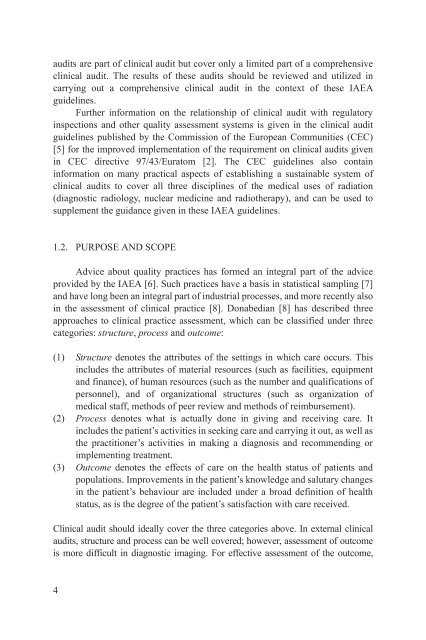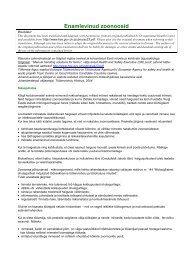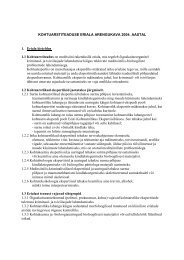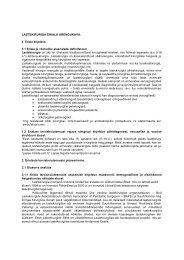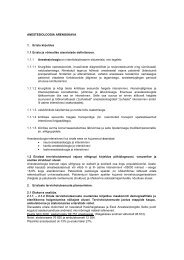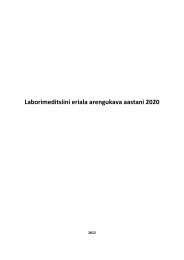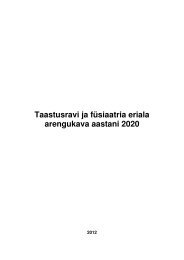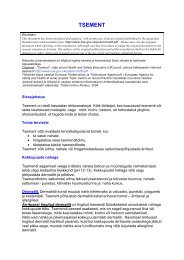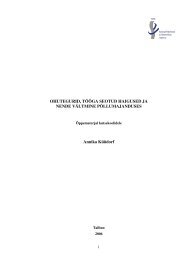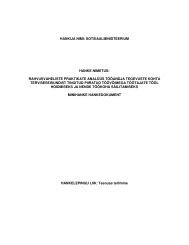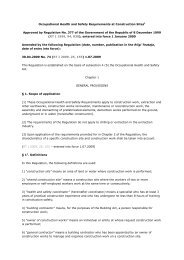SErIES IAEA HumAn HEAltH SErIES IAEA Hum
SErIES IAEA HumAn HEAltH SErIES IAEA Hum
SErIES IAEA HumAn HEAltH SErIES IAEA Hum
You also want an ePaper? Increase the reach of your titles
YUMPU automatically turns print PDFs into web optimized ePapers that Google loves.
audits are part of clinical audit but cover only a limited part of a comprehensive<br />
clinical audit. The results of these audits should be reviewed and utilized in<br />
carrying out a comprehensive clinical audit in the context of these <strong>IAEA</strong><br />
guidelines.<br />
Further information on the relationship of clinical audit with regulatory<br />
inspections and other quality assessment systems is given in the clinical audit<br />
guidelines published by the Commission of the European Communities (CEC)<br />
[5] for the improved implementation of the requirement on clinical audits given<br />
in CEC directive 97/43/Euratom [2]. The CEC guidelines also contain<br />
information on many practical aspects of establishing a sustainable system of<br />
clinical audits to cover all three disciplines of the medical uses of radiation<br />
(diagnostic radiology, nuclear medicine and radiotherapy), and can be used to<br />
supplement the guidance given in these <strong>IAEA</strong> guidelines.<br />
1.2. PURPOSE AND SCOPE<br />
Advice about quality practices has formed an integral part of the advice<br />
provided by the <strong>IAEA</strong> [6]. Such practices have a basis in statistical sampling [7]<br />
and have long been an integral part of industrial processes, and more recently also<br />
in the assessment of clinical practice [8]. Donabedian [8] has described three<br />
approaches to clinical practice assessment, which can be classified under three<br />
categories: structure, process and outcome:<br />
(1) Structure denotes the attributes of the settings in which care occurs. This<br />
includes the attributes of material resources (such as facilities, equipment<br />
and finance), of human resources (such as the number and qualifications of<br />
personnel), and of organizational structures (such as organization of<br />
medical staff, methods of peer review and methods of reimbursement).<br />
(2) Process denotes what is actually done in giving and receiving care. It<br />
includes the patient’s activities in seeking care and carrying it out, as well as<br />
the practitioner’s activities in making a diagnosis and recommending or<br />
implementing treatment.<br />
(3) Outcome denotes the effects of care on the health status of patients and<br />
populations. Improvements in the patient’s knowledge and salutary changes<br />
in the patient’s behaviour are included under a broad definition of health<br />
status, as is the degree of the patient’s satisfaction with care received.<br />
Clinical audit should ideally cover the three categories above. In external clinical<br />
audits, structure and process can be well covered; however, assessment of outcome<br />
is more difficult in diagnostic imaging. For effective assessment of the outcome,<br />
4


